WANT EVEN MORE HEALTHY IDEAS FROM SHAPE YOUR FUTURE?
Cooking at home is a great way to save money and eat better, but if you don’t have much experience in the kitchen, it can be intimidating.
Not to worry! Cooking good food doesn’t need to be complicated. With a few basic skills, anyone can whip up a healthy and delicious meal. We’ve put together this ultimate beginner’s guide to cooking to get you started!
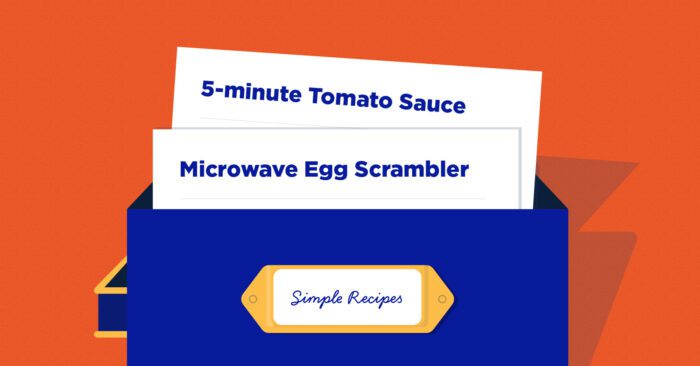
Keep it simple.
Since there are countless recipes online and in cookbooks, it’s easy to get overwhelmed! If you’re a beginner, start with simple recipes that only have a few ingredients like this 5-Minute Tomato Sauce or this Microwave Egg Scrambler.
Not sure what to make first? Shape Your Future has dozens of easy, healthy and delicious recipes. Whether you are searching for sides, salads, dinner ideas or breakfast options, there’s something for everyone!
Here are some quick links for:

Learn the lingo.
If you’ve ever watched a cooking show, you may have noticed that cooking has its own language. While you don’t need to know every term, mastering a few can help you understand basic recipes.
Here are some of the most common cooking terms:
Bake: Cooking in an oven. Making dessert or bread is commonly referred to as baking, while cooking savory foods, such as meats or vegetables, is often called roasting.
Beat: Mixing rapidly while incorporating some amount of air into the food. You can use a hand mixer to speed up the process.
Boil: Heating a liquid until it bubbles.
Simmer: Heating food until small bubbles rise from the bottom of the pot and occasionally break the surface. This cooks food at a lower temperature than boiling.
Sauté: Quickly cooking meats or vegetables in a small amount of fat, such as butter or olive oil, until the food is cooked all the way through and lightly brown.
A dash: Roughly 1/8 teaspoon.
A pinch: About 1/16 teaspoon. It’s based on the amount of spice you can “pinch” between your fingers.
Marinate: Soaking a piece of meat or vegetables in a flavorful liquid called “marinade” to soften it and give it flavor.
Al Dente: Cooking pasta until it has a slight resistance to a bite. This is often considered the perfect consistency.
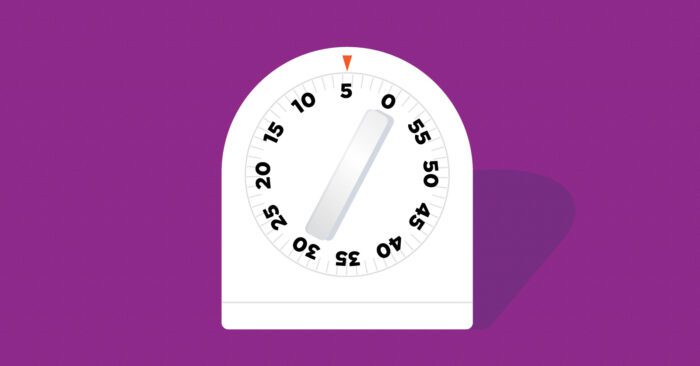
A little preparation goes a long way.
Before you begin cooking, carefully review the recipe and gather everything you need to make your dish, including:
- Ingredients like spices, oils and cooking sprays
- Cutting surfaces and containers for mixing ingredients
- Pots and pans
- Tools and utensils, such as measuring cups and spoons, knives, whisks and spatulas
This small step can help you avoid frustration and focus on the task at hand. When everything is ready to go, you don’t have to search the kitchen for a missing ingredient or a lost measuring cup!
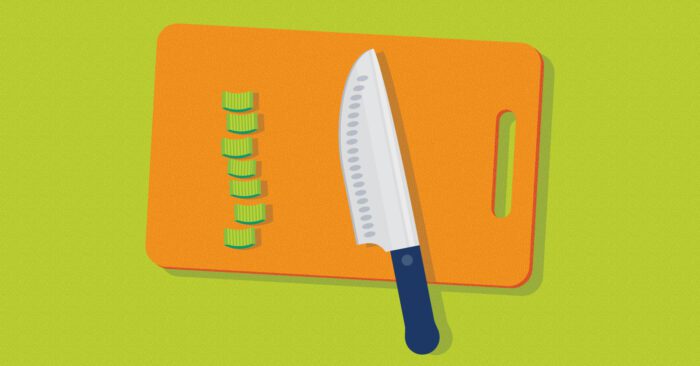
Cut to the basics.
Most recipes require at least a little slicing and dicing. Learning a few basic knife skills can really up your game. With a little practice, anyone can sharpen their cutting skills.
Here’s a rundown of the most common chopping techniques:
Slice: Cutting an ingredient into thin, flat pieces.
Dice: Cutting food into squares that look like dice. You can dice a vegetable into large or small pieces. Try to keep your pieces roughly the same size so your food cooks evenly.
Mince: Cutting food into even smaller pieces than dicing. These are the tiny bits that would be hardest to pull out of the finished dish. Recipes often call for minced garlic or onions to add flavor.
Chop: Chopping is similar to dicing and mincing food but results in larger pieces, like the chunks of potato or carrot in a stew.
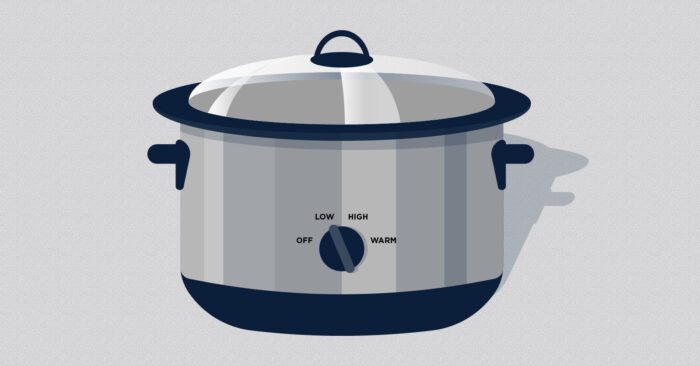
Befriend your oven and slow cooker.
Cooking food in the oven or slow cooker is a “set it and forget it” operation. Simply prep and season your ingredients, then let modern technology work for you!
“Hands-off meals” are great for beginners and huge time savers for busy families. Just make sure to cook any meat to a safe internal temperature. This guide from FoodSafety.gov is a great reference for meat, poultry, seafood and more.
You can even download a printable chart to hang in your kitchen as a guide.

Avoid conversion confusion.
Whether you’re a newbie cook or quite seasoned, sometimes measurements just don’t make sense! The tools and abbreviations used in cooking can be confusing for many people.
You can measure most ingredients with these basic tools:
- Measuring cups: Use for large amounts of dry ingredients like ¾ cup flour, oats or rice.
- Measuring spoons: Use for small amounts of dry and liquid ingredients like a teaspoon of vegetable oil or baking powder.
- A liquid measuring cup: Use for large amounts of liquids like a cup of broth, water or milk.
When you’re following a recipe or looking at your measuring tools, you’re likely to see abbreviated measurements.
Knowing a few of the most common abbreviations will help you avoid mistakes.
| Abbreviation | Measurement |
| tbsp. | tablespoon |
| tsp. | teaspoon |
| oz. | ounce |
| fl. oz. | fluid ounce |
| C. | cup |
| qt. | quart |
| pt. | pint |
| gal. | gallon |
| lb. | pound |
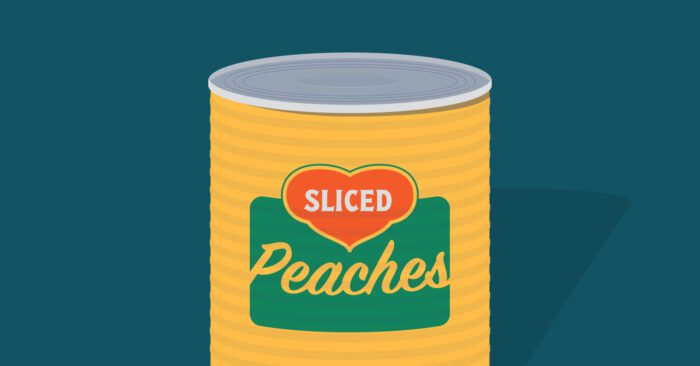
Start small.
Don’t feel like you need to make an elaborate dinner to enjoy the benefits of home cooking. You can always start small by cooking a simple breakfast or just one part of your meal.
Frozen veggies, canned fruit and microwaveable rice are no-prep sides that add lots of flavor and nutrients to your meal. These shortcuts are also a great way to include all five food groups in your diet.
Try pairing Sheet Pan Fajitas with a can of peaches or top a sweet potato with deli meat and a bag of steamed broccoli. Not only will you be well on your way to filling half your plate with fruits or veggies, but you’ll also be proud of what you’ve prepared.
Now that you know the basics, let’s see what you can create!




